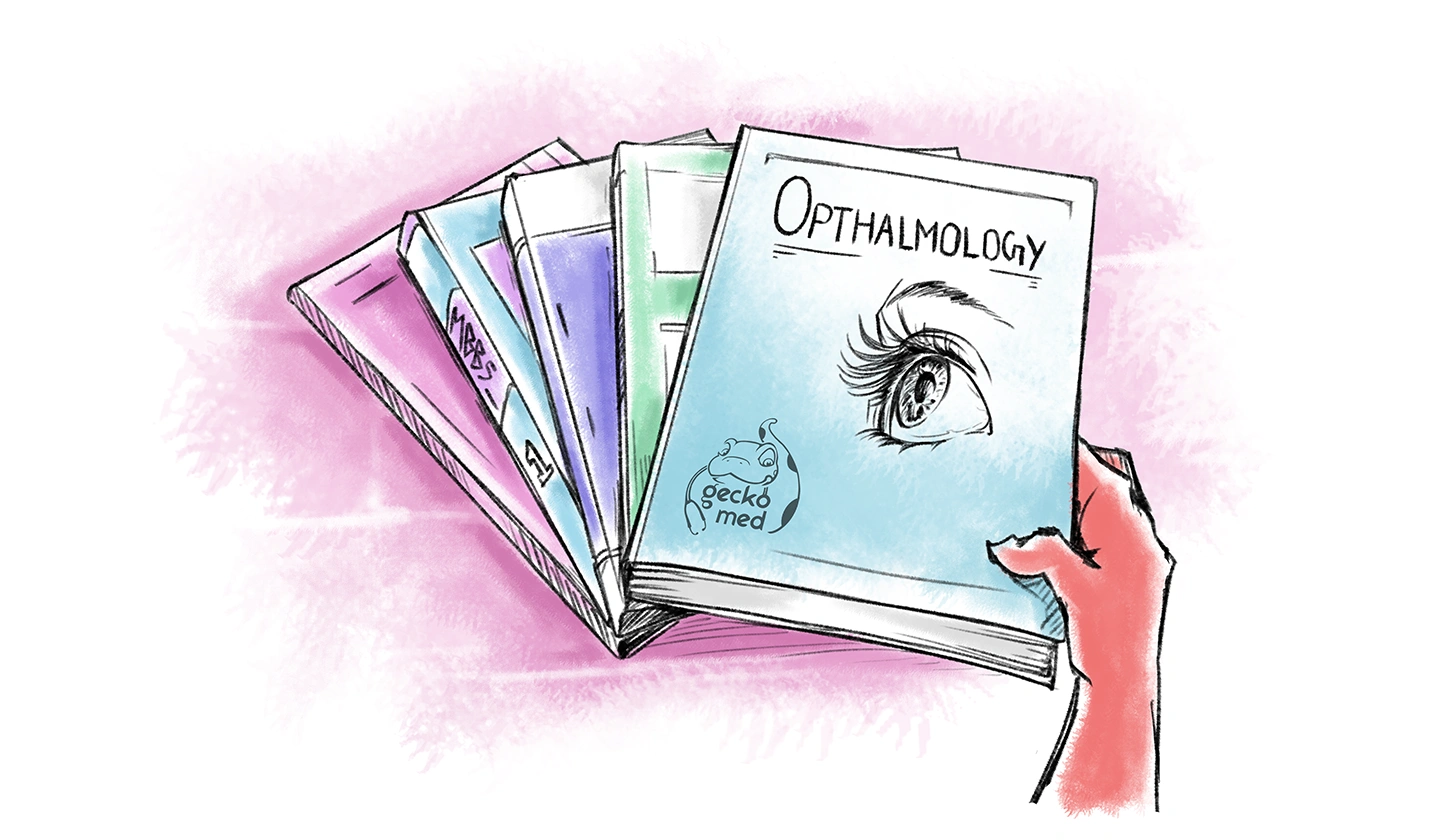Ophthalmology, the branch of medicine focused on the diagnosis, treatment, and prevention of eye diseases, is a critical subject in the MBBS curriculum.
To excel in this subject, it is crucial for students to select the right set of textbooks and resources. The right books can provide the necessary depth of knowledge, practical insights, and exam-focused content.
However, with a wide variety of textbooks, atlases, and question banks available, choosing the right one can be overwhelming.
In this article, we will explore the best ophthalmology books for MBBS students, categorized into primary textbooks, clinical examination books, visual science resources, and supplementary materials.
Ophthalmology Books for MBBS: Primary Textbooks
In MBBS, the primary textbooks serve as the foundation for understanding the fundamental concepts and clinical aspects of ophthalmology.
These books cover everything from the basic anatomy of the eye to the advanced management of complex eye conditions.
Below are two essential primary textbooks for MBBS students.
Parsons’ Diseases of the Eye

“Parsons’ Diseases of the Eye” is one of the most respected and widely used textbooks for studying ophthalmology.
This textbook is an exhaustive resource, covering a broad spectrum of eye diseases, their pathophysiology, clinical presentations, diagnostic approaches, and treatment protocols.
Due to its comprehensive nature, it is considered a cornerstone reference for ophthalmology students.
The book has been praised for its systematic and easy-to-understand approach, despite covering complex topics.
The content is organized in such a way that students can gradually progress from basic concepts like anatomy and physiology of the eye to more specialized topics such as ocular surgery and retinal diseases.
The book also provides an in-depth explanation of common and rare eye diseases, making it an excellent resource for medical students at all levels of learning.
Features and Why It’s a Classic
- Comprehensive Coverage: The book offers detailed information on various eye diseases, including infections, refractive errors, congenital conditions, glaucoma, cataracts, and retinal disorders.
- Clear Illustrations: It includes high-quality diagrams and clinical images, which help students visualize the conditions being discussed. The inclusion of images makes it easier for students to correlate clinical findings with actual conditions.
- Theoretical and Clinical Knowledge: The book provides both theoretical knowledge and practical advice on how to approach the diagnosis and treatment of eye diseases. This balance between theory and practice is essential for MBBS students.
Pros for Students
- Thorough and Detailed: The book is incredibly detailed, making it suitable for students who want a deep understanding of ophthalmology.
- Widely Accepted: This book is recommended by many ophthalmology professors and institutions worldwide.
- Helpful Illustrations: The illustrations help in understanding the complex anatomical and pathological concepts associated with eye diseases.
Cons for Students
- Lengthy and Detailed: Due to the exhaustive nature of the book, some students might find it overwhelming, especially when preparing for exams that require concise knowledge.
- Technical Language: The language of the book can be somewhat technical, which might pose a challenge for students who are not yet well-versed in medical terminology.
Khurana’s Comprehensive Ophthalmology
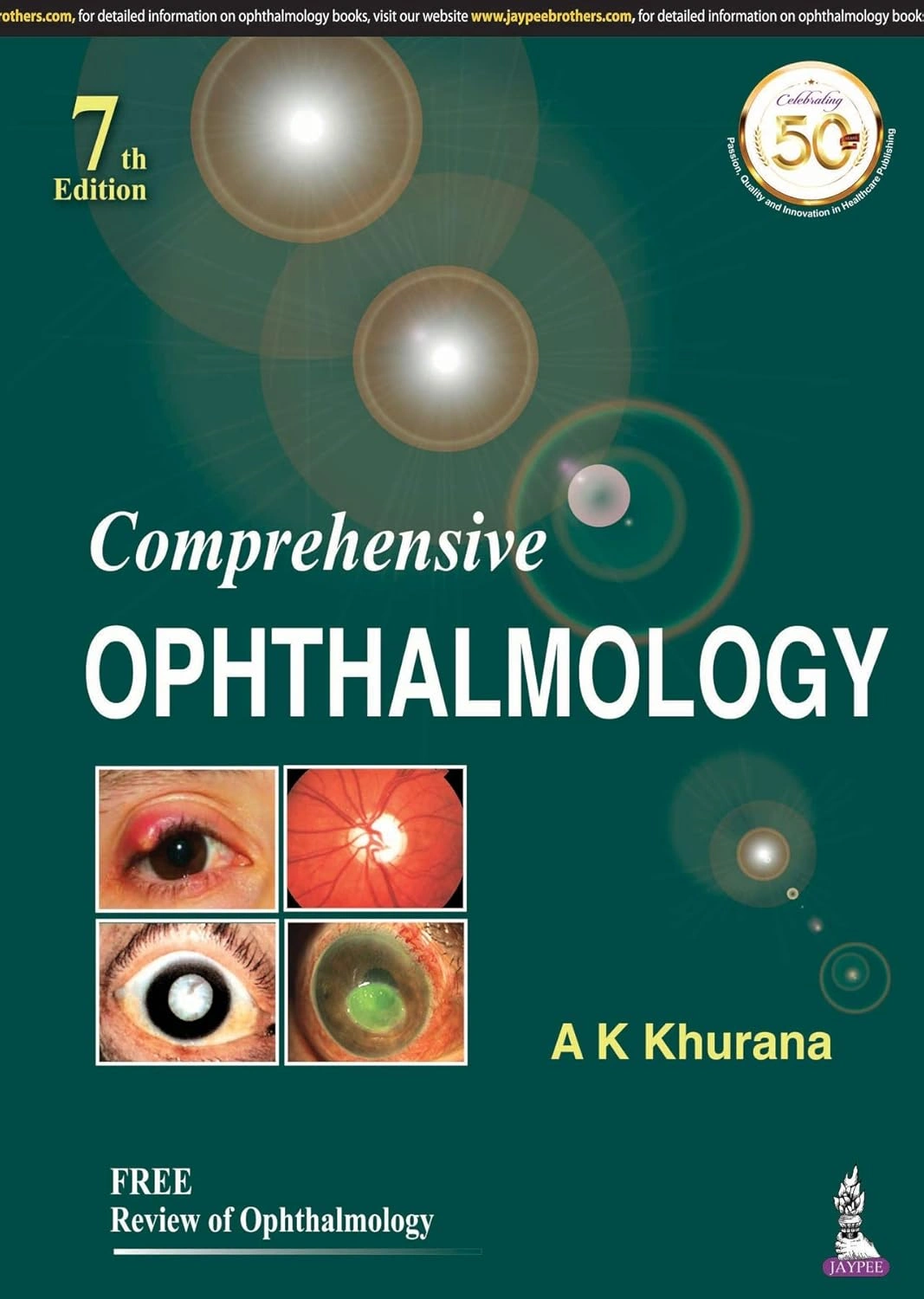
Khurana’s “Comprehensive Ophthalmology” is known for its concise and exam-oriented approach.
It has been specifically designed to cater to the needs of MBBS students and practitioners by presenting material in a structured and simplified format.
The book provides a detailed yet easy-to-understand explanation of a wide range of ophthalmic conditions, from basic anatomy to complex diseases.
What makes this book particularly popular is its exam-focused approach.
It is often recommended by students who are preparing for competitive exams due to its straightforward content, which focuses on the most important aspects of ophthalmology.
The writing style is student-friendly, making it an ideal resource for quick revision and practical understanding.
Features and Why It’s a Great Choice
- Concise and Exam-Oriented: This book is ideal for students who are looking for an efficient way to study without being bogged down by unnecessary details. The content is structured around key concepts that are often tested in exams.
- Clinical Focus: While it covers the basic sciences, Khurana’s book places a strong emphasis on clinical examination, diagnosis, and management of eye diseases. This is crucial for students transitioning from theoretical learning to clinical practice.
- Clear, Simple Language: The book’s language is simple, making it accessible to students at different levels of medical education. Complex topics are broken down into simpler sections for better understanding.
Pros for Students
- Exam-Focused Content: The book provides the most relevant information for exam preparation, including numerous tips and high-yield points.
- Well-Organized: The chapters are logically structured, which helps students quickly navigate through the content.
- Clinically Relevant: The book is highly practical and provides guidance on how to manage patients with various ophthalmic conditions.
Cons for Students
- Limited Depth: Some students may find that the book does not cover more advanced topics in as much detail as other textbooks.
- Lack of Case Studies: While the book includes clinical guidelines, it may not include enough real-life case studies for students seeking more practical experience.
To enhance your clinical skills, consider using books specifically designed for clinical examination.
Ophthalmology Books for MBBS: Books for Clinical Examination
In addition to primary textbooks, MBBS students need resources that focus specifically on clinical examination.
These books provide practical guidance on how to examine patients, interpret diagnostic findings, and manage common eye disorders.
1) The Eye: Basic Sciences in Practice by Forrester et al.
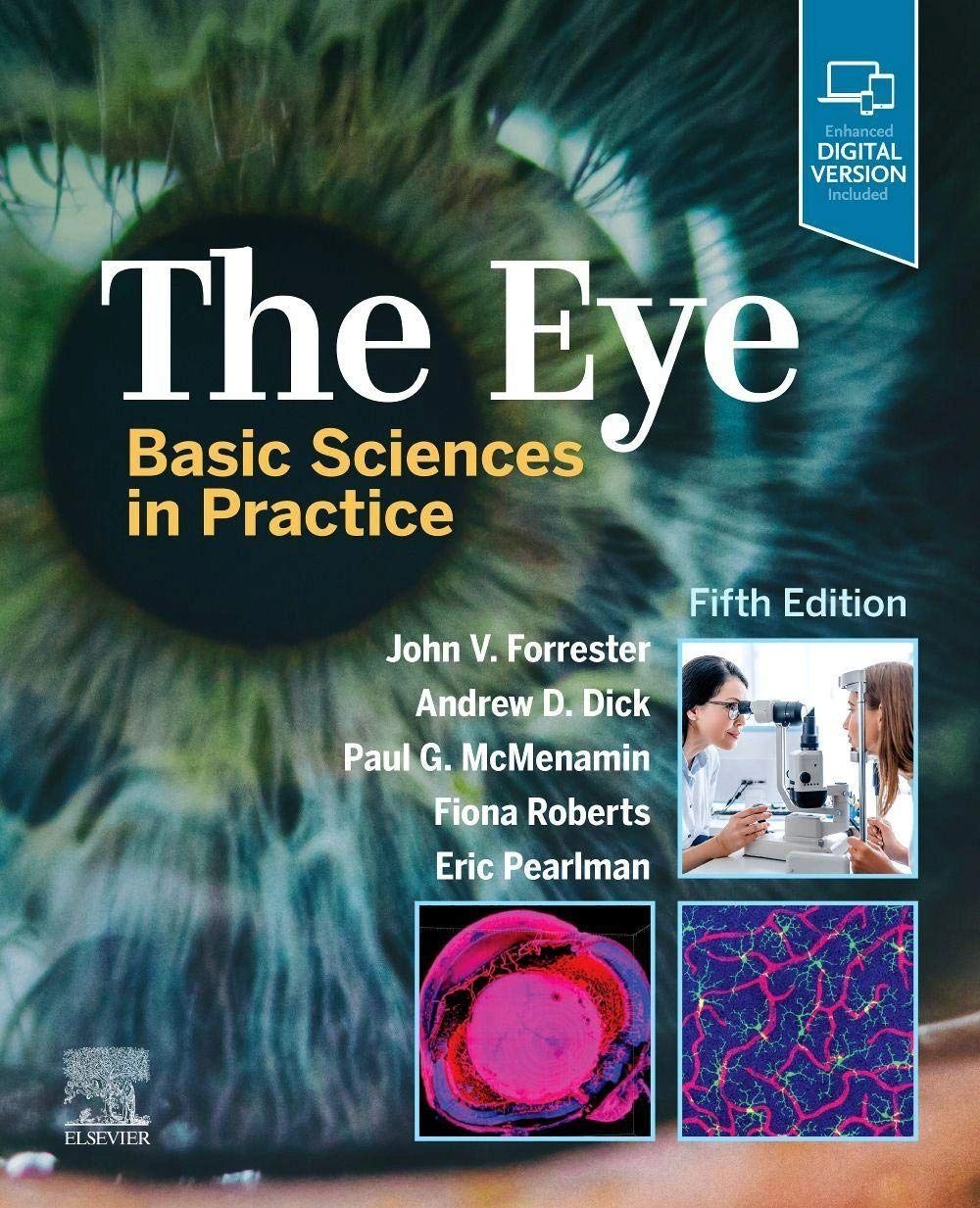
“The Eye: Basic Sciences in Practice” by Forrester et al. provides an excellent foundation in the basic sciences related to ophthalmology.
The book emphasizes the anatomy, physiology, and pathophysiology of the eye, helping students understand how diseases affect eye function.
This understanding is essential for making accurate diagnoses and formulating effective treatment plans.
Focus on Basic Sciences
- Anatomy and Physiology: The book provides a thorough explanation of the structure and function of the eye, from the retina to the cornea.
- Pathophysiology: Students can learn how various diseases affect the basic functions of the eye, providing insight into the clinical presentations of different conditions.
Pros for Students
- Strong Foundation in Basic Sciences: The book helps students build a solid foundation in the core principles that underpin ophthalmic conditions.
- Clear Explanations: The content is well-explained, making it accessible even to those with limited prior knowledge of the subject.
Cons for Students
- Theory-Focused: While the book is excellent for understanding basic sciences, it may lack enough clinical applications and practical tips for managing patients.
- Dense Content: Some chapters may be overwhelming for students looking for a quick overview before exams.
2) Clinical Ophthalmology: A Systematic Approach by Kanski and Bowling
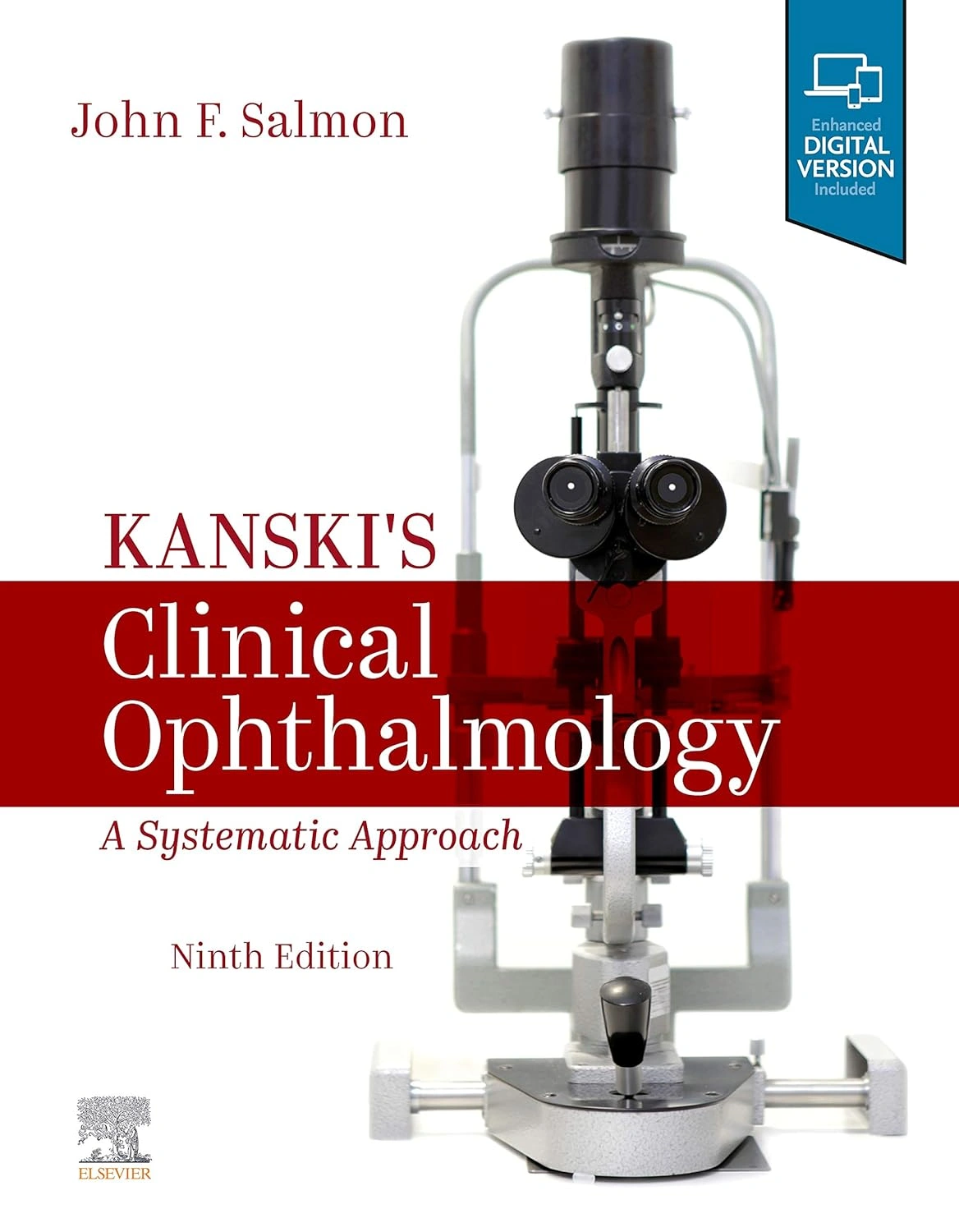
“Clinical Ophthalmology: A Systematic Approach” by Kanski and Bowling is one of the most widely recommended books for clinical ophthalmology.
It provides a structured, systematic approach to understanding the clinical aspects of ophthalmic conditions.
The book offers an excellent mix of theoretical knowledge and practical guidance for managing patients, making it an indispensable resource for clinical practice.
Comprehensive Coverage and Clinical Cases
- Clinical Cases: The book includes a wide range of clinical cases that help students understand how to apply their theoretical knowledge in real-world scenarios.
- Diagnostic and Treatment Protocols: It outlines standard protocols for diagnosing and treating common and uncommon eye conditions, which is essential for clinical rotations.
Pros for Students
- Systematic Approach: The book organizes information in a way that is easy to follow, making it ideal for clinical learning.
- Practical Case Studies: The case studies help students connect theory with practice and improve their clinical reasoning skills.
Cons for Students
- Lengthy: The book can be quite long and detailed, which might make it challenging for quick revision before exams.
- Somewhat Advanced: Some of the clinical cases may be too complex for early-year students.
Visual sciences play a crucial role in ophthalmology, and dedicated books can deepen your understanding in this area.
Ophthalmology Books for MBBS: Books for Visual Sciences
Visual sciences are an essential part of ophthalmology, focusing on optics, refraction, and visual perception.
Here are two key books that address these topics in depth.
1) Optics And Refraction by A.K. Khurana
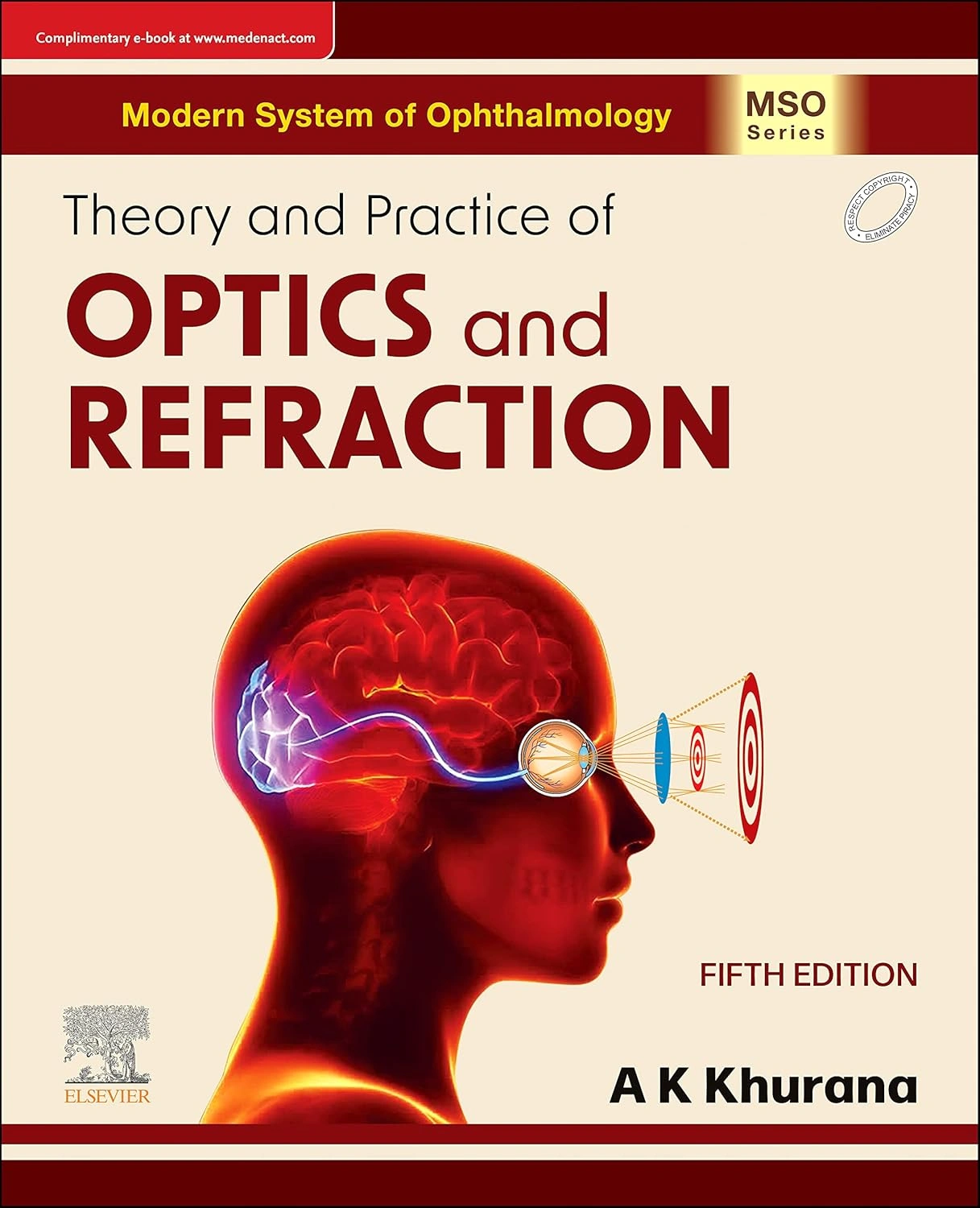
“Optics And Refraction” by A.K. Khurana is a must-read for students interested in understanding the principles of optics, refraction, and vision correction.
The book covers both theoretical aspects of optics and practical knowledge needed for clinical practice, such as the prescription of corrective lenses and understanding refractive errors like myopia and hyperopia.
Importance for Understanding Optics and Refraction
- In-Depth Coverage of Optics: The book covers everything from basic light behavior to more advanced concepts in Optics And Refraction, such as the use of lenses and corrective devices.
- Practical Application: It explains how to assess and treat common refractive errors, which is crucial for ophthalmology students.
Pros for Students
- Clear Explanations: The book presents complex topics in a simple and understandable manner.
- Practical Focus: It includes plenty of clinical tips and practical applications for student learning.
Cons for Students
- Physics-Centric: Students who struggle with physics may find some sections difficult to understand.
- Basic for Advanced Learners: While excellent for beginners, more advanced students might need additional resources to deepen their knowledge.
In addition to textbooks, several supplementary resources can enhance your learning experience.
Ophthalmology Books for MBBS: Supplementary Resources
Supplementary resources like journals, atlases, and question banks can provide more information and updated clinical insights.
A) Atlases
Atlases are invaluable for students learning ophthalmology. They provide visual aids that help students identify and diagnose eye diseases effectively.
1) Kanski’s Clinical Ophthalmology: A Systematic Approach (Includes an Atlas)
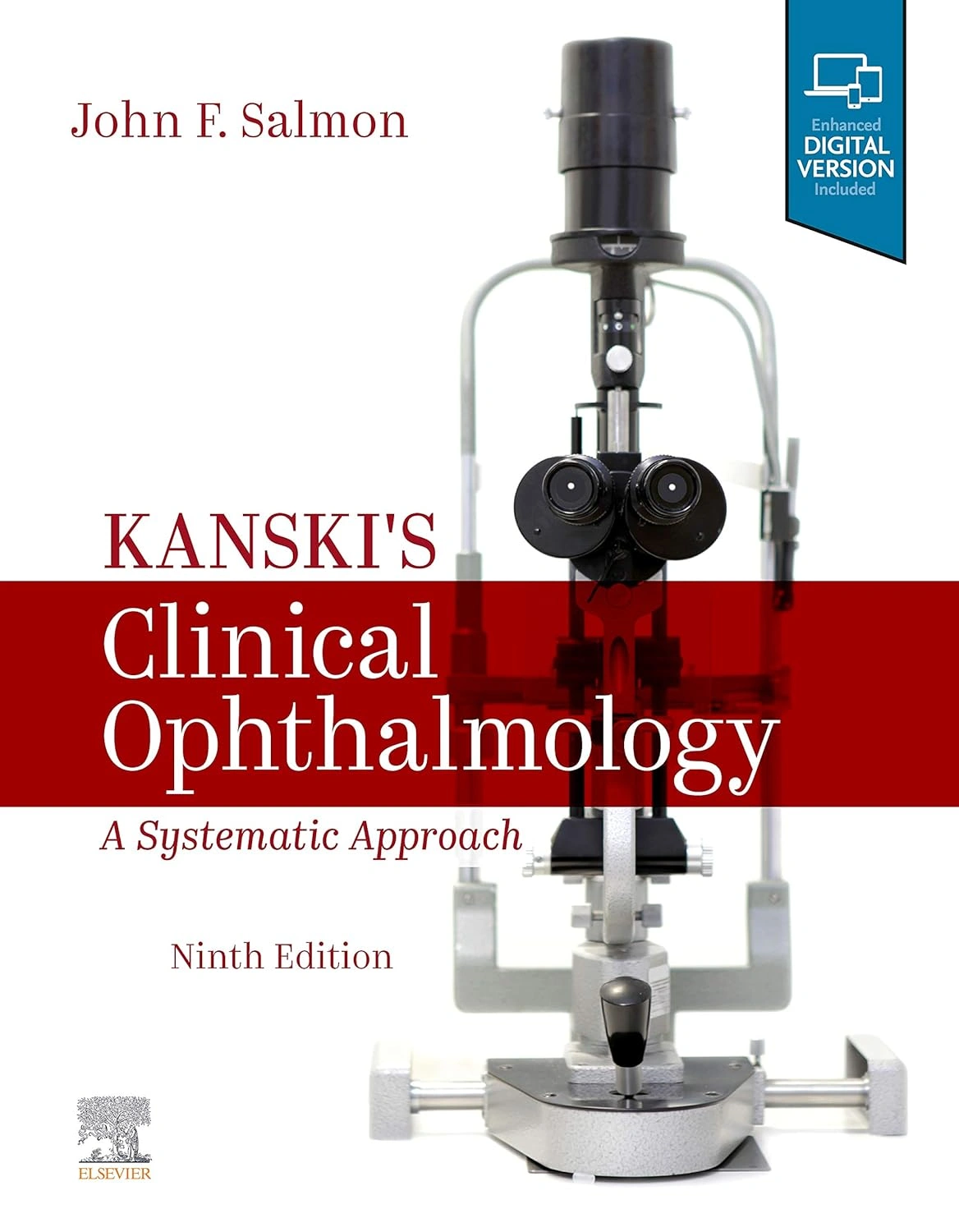
This book not only offers comprehensive coverage of ophthalmology but also includes an atlas of clinical images.
These images are particularly useful for students during their clinical rotations, where recognizing diseases visually is key to accurate diagnosis.
Value of Visual Aids
- High-Quality Images: The images included are of excellent quality, offering a close representation of what students will encounter in clinical practice.
- Visual Learning: For students who are visual learners, the atlas provides essential support in understanding and diagnosing eye diseases.
2) Color Atlas of Ophthalmology by Amar Agarwal and Soosan Jacob
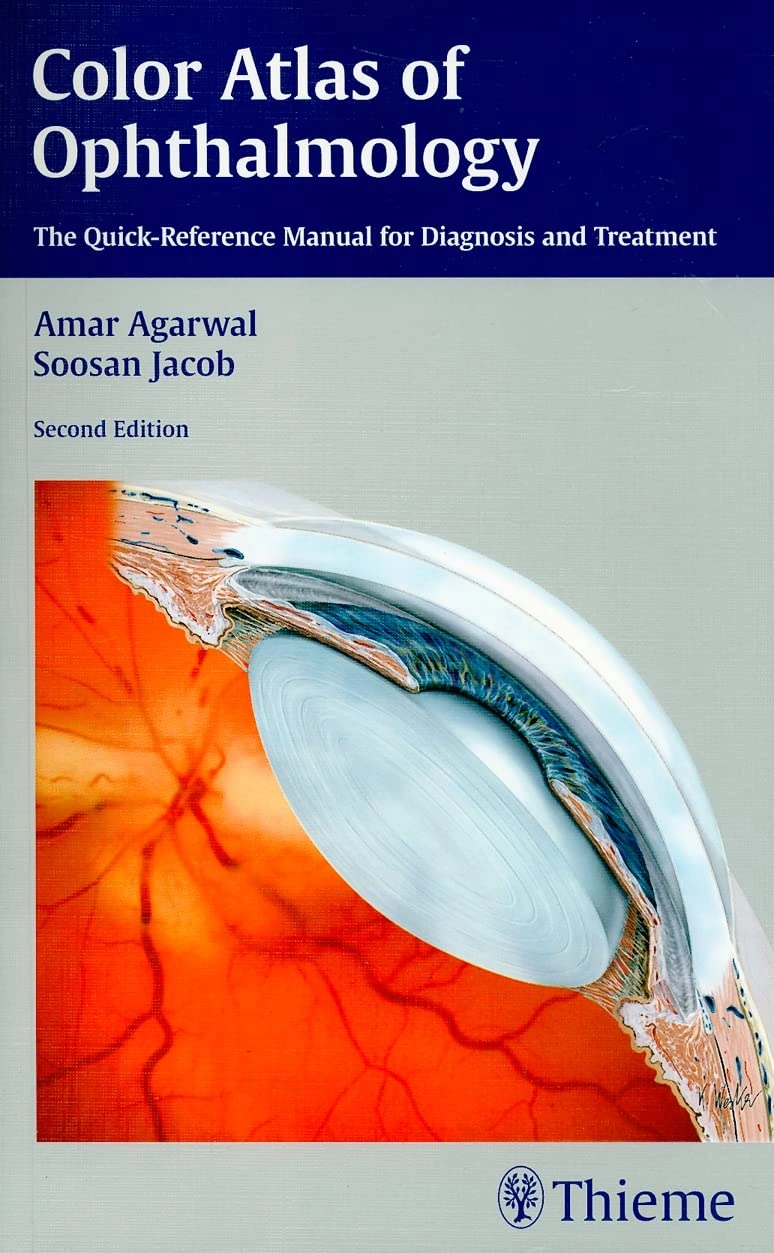
“Color Atlas of Ophthalmology” by Amar Agarwal and Soosan Jacob is another great supplementary resource.
This atlas provides high-quality, color photographs of various ophthalmic conditions, making it easier for students to learn the clinical presentation of different diseases.
High-Quality Images and Descriptions
- Concise Descriptions: Along with images, concise descriptions accompany each case, providing valuable insights into diagnosis and treatment.
- Comprehensive Coverage: The atlas covers both common and rare eye conditions.
B) Question Banks
Question banks are essential tools for MBBS students preparing for exams.
1) FAQs in Opthalmology by N Venkatesh
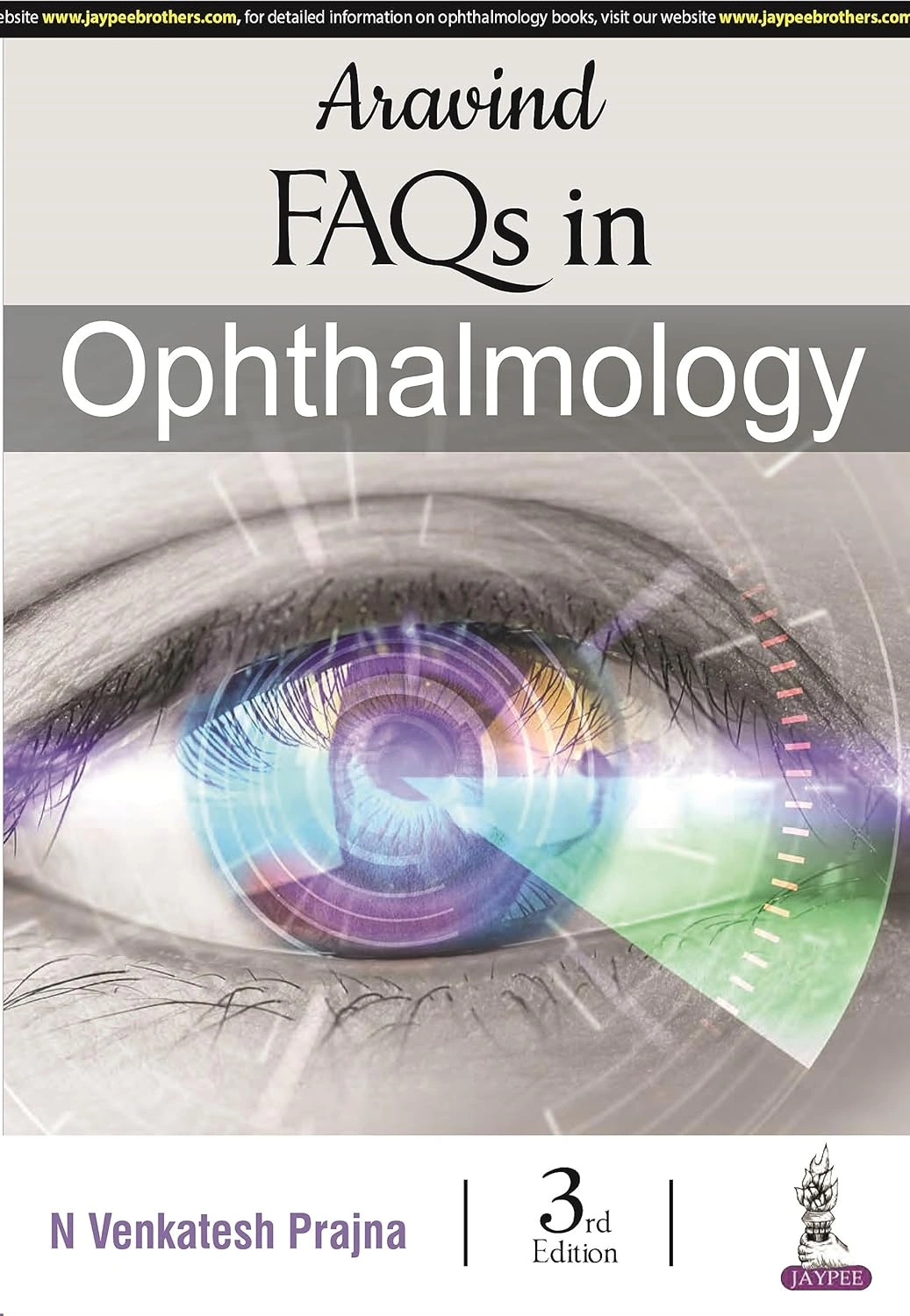
This question bank includes a wide variety of FAQs, designed to test the student’s knowledge across various aspects of ophthalmology.
The explanations provided after each question help clarify concepts and are beneficial for revision.
Usefulness For Exam Preparation
- Comprehensive MCQs: The question bank covers all topics in ophthalmology, offering a great way to test knowledge.
- Helpful Explanations: The explanations after each answer enhance understanding.
2) Self-Assessment & Review of Ophthalmology by Ruchi Rai

This concise self-assessment book is designed to help students focus on key concepts and prepare for exams effectively.
Concise Format
- Focused Revision: The book focuses on high-yield concepts, making it perfect for quick revision.
- Practical Approach: The questions are practical and exam-focused.
To make the most of your textbooks, it’s important to choose the right ones for your learning style and needs.
Tips for Choosing the Right Books
Choosing the right books for studying ophthalmology is crucial for success in both your academic exams and clinical rotations.
Given the vast amount of information you need to absorb, selecting books that align with your learning style and your course requirements is key to making your study time more efficient and productive.
Below are some tips that will guide you in selecting the best ophthalmology books during your MBBS program.
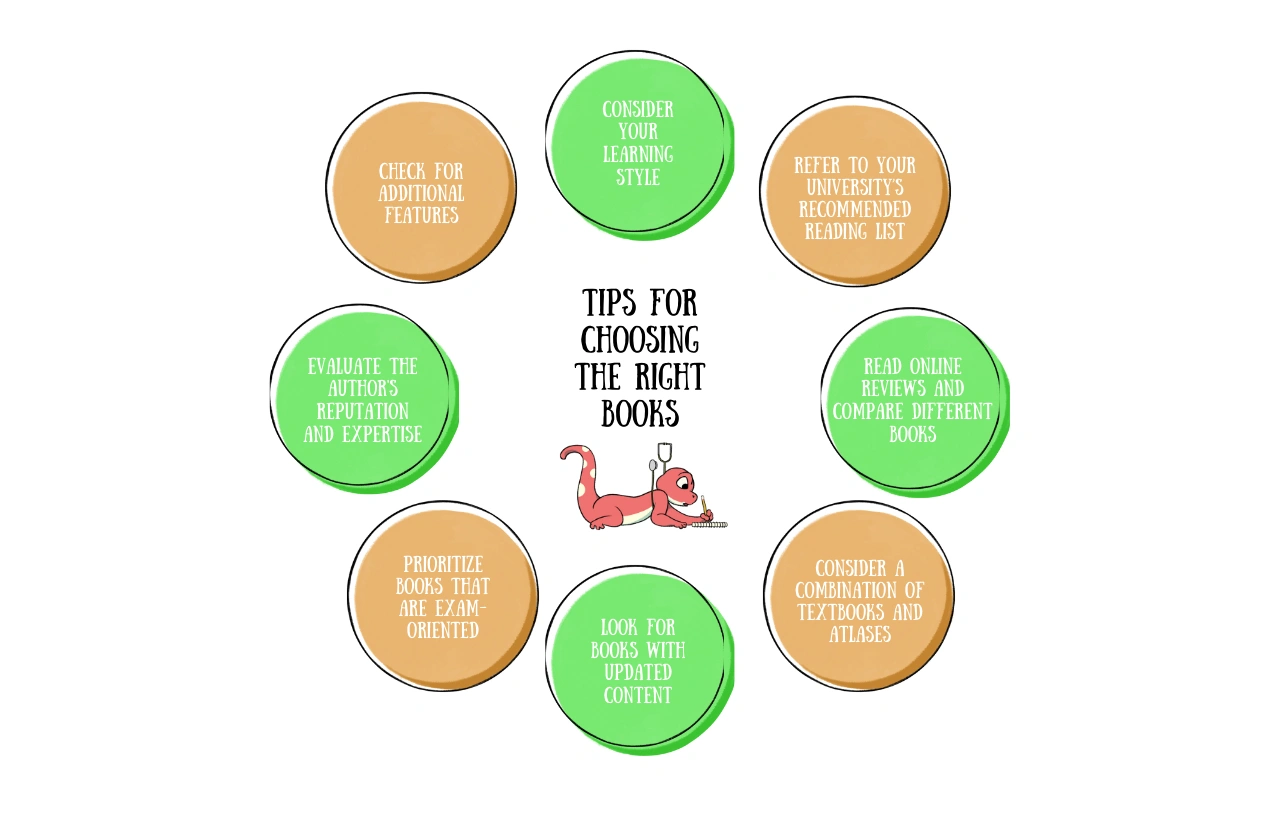
1) Consider Your Learning Style (Visual, Textual, etc.)
Everyone has a unique learning style, and recognizing yours can help you choose resources that will make studying more effective.
Some students learn best through visual aids, while others prefer detailed written explanations. For example:
- Visual Learners: If you retain information better through images, diagrams, and clinical photos, you may benefit from books with high-quality illustrations, such as Kanski’s Clinical Ophthalmology and Color Atlas of Ophthalmology by Yanoff and Duker. These books provide visual examples of common and rare eye diseases, which can be immensely helpful for understanding complex conditions.
- Textual Learners: If you prefer detailed descriptions and a thorough explanation of concepts, opt for books like Parsons’ Diseases of the Eye or Khurana’s Comprehensive Ophthalmology. These books offer well-explained, text-heavy chapters that break down ophthalmic conditions systematically.
- Kinesthetic Learners: If you learn best through hands-on experience or clinical exposure, you should focus on books that emphasize clinical practice and patient management. Books like Clinical Ophthalmology: A Systematic Approach and A.K. Khurana’s Textbook of Ophthalmology provides practical, case-based learning, ideal for clinical rotations.
Recognizing your learning preferences will ensure that you invest time in books that complement your approach to studying, helping you retain and understand information more effectively.
2) Refer to Your University’s Recommended Reading List
Most universities provide a list of recommended and required textbooks for each subject, including ophthalmology.
These textbooks are often selected by experienced faculty who know what is required to excel in exams and clinical practice.
Following your university’s reading list ensures that you cover all the essential topics in your curriculum.
While supplementary books can help reinforce your learning, sticking to the core textbooks recommended by your department or professors is usually the best approach.
These textbooks are typically aligned with the course structure and will provide the material needed for both theory exams and clinical assessments.
If your university doesn’t provide a reading list, you can always ask your professors for recommendations or check online forums and student groups for advice on the most commonly used textbooks in your medical school.
3) Read Online Reviews and Compare Different Books
In today’s digital age, online reviews, and discussion forums can be a valuable resource when selecting textbooks.
Websites like Amazon, Goodreads, and online medical forums often feature reviews from students and professionals who have used the books.
These reviews can provide insights into the strengths and weaknesses of specific textbooks, helping you make an informed decision.
When reading reviews, consider:
- Content Depth: Does the book offer a sufficient depth of information on ophthalmology, or does it gloss over important details?
- Clarity of Explanations: Are the concepts explained clearly and in a way that is easy to understand? Is the language simple, or does the book use too much technical jargon?
- Quality of Visuals: For books with illustrations or clinical images, review the quality of the visuals and whether they enhance the learning experience.
You can also compare books based on their focus areas.
For example, some books are more focused on clinical knowledge and patient management, while others emphasize the scientific and theoretical aspects of ophthalmology.
This comparison can help you identify which resources suit your specific needs.
4) Consider a Combination of Textbooks and Atlases
In ophthalmology, visual aids like atlases and clinical case studies are often just as important as textbooks.
While textbooks provide the foundational knowledge necessary for understanding diseases and their management, atlases help reinforce that knowledge by providing visual representations of conditions.
- Textbooks: Offer detailed explanations of eye diseases, diagnostic procedures, treatment protocols, and clinical examination techniques. These are ideal for building your knowledge base.
- Atlases: Help students recognize the clinical features of different conditions by showing high-quality images and providing concise descriptions of cases. For example, Kanski’s Clinical Ophthalmology includes an atlas with color photographs of ophthalmic conditions, making it easier for you to understand the clinical presentations.
Combining textbooks with atlases is an excellent strategy for mastering both the theoretical and practical aspects of ophthalmology.
Atlases are especially beneficial during clinical rotations when you are expected to identify eye conditions based on their appearance.
5) Look for Books with Updated Content
Ophthalmology, like many other fields of medicine, is constantly evolving.
New treatments, diagnostic methods, and technologies are introduced regularly, making it essential to use the most recent editions of textbooks.
Always look for the latest edition of a book to ensure that the information is current and reflects the most up-to-date research and clinical guidelines.
New editions often include revisions to existing content, updated treatment protocols, the latest technological advancements in ophthalmology, and newer clinical case studies.
For example, the latest edition of Parsons’ Diseases of the Eye and Khurana’s Comprehensive Ophthalmology might include new chapters on the role of artificial intelligence in diagnosis or the latest advancements in refractive surgery.
6) Prioritize Books That Are Exam-Oriented
As an MBBS student, one of your primary concerns is preparing for exams.
Some textbooks are more exam-oriented than others, meaning they focus on delivering concise, high-yield content that is commonly tested in university exams or competitive medical exams.
Books like Khurana’s Comprehensive Ophthalmology and Self-Assessment & Review of Ophthalmology by Ruchi Rai are excellent for revision and exam preparation.
These books include practice questions, summary points, and key concepts that are often repeated in exams.
They are designed to help you quickly review the most important aspects of ophthalmology and test your knowledge through self-assessment exercises.
However, while exam-oriented books are useful for short-term goals, do not rely solely on them.
It’s important to have a solid understanding of the subject, which can only be achieved by studying comprehensive textbooks as well.
7) Evaluate the Author’s Reputation and Expertise
When selecting ophthalmology books, it’s helpful to consider the author’s background, qualifications, and reputation in the field.
Books written by well-established experts and respected ophthalmologists tend to be more reliable and provide more accurate information.
Authors like Parsons, Khurana, and Kanski have decades of experience in ophthalmology, and their books are widely regarded as authoritative in the field.
Choosing books from reputable authors ensures that you are learning from trusted sources that are grounded in evidence-based medicine.
8) Check for Additional Features
Some textbooks come with additional resources that can enhance your learning experience. For example:
- Online Resources: Some books offer companion websites with extra content, such as video lectures, quizzes, and interactive tools.
- Practice Questions and MCQs: Many textbooks include practice questions or MCQs at the end of chapters, which can be useful for self-assessment.
- Case Studies: Books with real-life clinical case studies are a great way to apply your knowledge and develop clinical reasoning skills.
Look for books that offer these supplementary features to enhance your overall understanding of ophthalmology.
By carefully selecting and utilizing these resources, you can build a strong foundation in ophthalmology and excel in your studies.
Conclusion
Ophthalmology is an essential and fascinating subject in the MBBS curriculum, and choosing the right resources can significantly impact your learning experience and success.
The books discussed in this guide offer a well-rounded approach to studying ophthalmology, catering to various learning needs—from in-depth theoretical texts to clinically focused materials.
Additionally, supplementary resources like atlases and question banks enhance visual learning and exam preparation.
For students who are visual learners, high-quality atlases like Kanski’s Clinical Ophthalmology and Color Atlas of Ophthalmology offer clear images and concise descriptions of common and rare eye conditions.
Question banks further help in solidifying theoretical knowledge through practical application in exam settings.
Ultimately, the key to success in ophthalmology lies in finding a combination of textbooks that suit your learning style and cater to your academic and clinical goals.
By balancing comprehensive theoretical books with clinical guides and supplementary materials, you can achieve a deeper understanding of ophthalmology and prepare effectively for exams and clinical practice.

